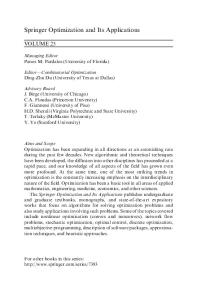Modeling Thermopower in AlPdMn Based Quasicrystalline Systems
- PDF / 61,395 Bytes
- 6 Pages / 612 x 792 pts (letter) Page_size
- 100 Downloads / 289 Views
Modeling Thermopower in AlPdMn Based Quasicrystalline Systems A. L. Pope1, B. M. Zawilski1, R. Gagnon2, T. M. Tritt1, J. Strom-Olsen2, R. Schneidmiller1, J. Kolis1 1. Clemson University, Clemson, SC 29634 2. McGill University, Montreal, Canada Abstract We report room temperature thermopower values and the temperature dependence for several AlPdMn based quasicrystals. In an effort to further understand the complexities of electrical transport in quasicrystalline systems, thermopower data for icosahedral Al71Pd21Mn8XReX will be presented and discussed. A relation of room temperature thermopower to the curvature of the thermopower is demonstrated. We propose an empirical fit to the thermopower data, utilizing three free variables. The physical significance of the fit parameters is discussed. These results are discussed in brief concerning the relation to the application of quasicrystals for use as thermoelectric materials.
Introduction The field of thermoelectrics utilizes materials that produce a substantial current when a temperature difference is placed across the material or, conversely, produces a temperature difference when a current is run through the material. In this manner, these materials produce power generation or refrigeration. In order to gauge a material’s potential for use in thermoelectric applications, a dimensionless figure of merit is employed. The figure of merit is S2 σT (1) λE + λL where S is thermopower, σ is the electrical conductivity and λE and λL are the electron and lattice contributions to the thermal conductivity, respectively. State-of-the-art thermoelectric materials have ZT ≈ 1, however, thermoelectric materials with ZT~ 2 to 4 are desired so thermoelectrics can compete with gas compression refrigeration technology. In order to achieve a ZT on this order of magnitude, thermal conductivity must be minimized while thermopower and electrical conductivity should be as large as possible. Glen Slack has proposed that a good thermoelectric should be a modeled by behaving as a phonon-glass electron-crystal. [ 1] Quasicrystals, discovered in the 1980’s, are materials that exhibit long range rotational order without the translational symmetry of a crystal.[2] Quasicrystals are of interest as thermoelectric materials since they exhibit electrical transport properties between those of a glass and a semi-metal. Quasicrystals also possess inherently low values (1-3 W/m-K) of thermal conductivity over a broad range of temperature. [3] Thermal conductivity remains low in quasicrystals despite the addition of impurities or the overall quality of the crystal. Thermopower in quasicrystals is typically at least an order of magnitude larger than that observed in metals or many semimetals. This is believed to be due to the fact that the Fermi energy in quasicrystals is very small resulting in a large diffusion thermopower contribution. In ZT =
K14.4.1
addition to these promising properties, the slope of electrical conductivity and thermopower increase together when T > 100K, which is atypical behavior
Data Loading...











